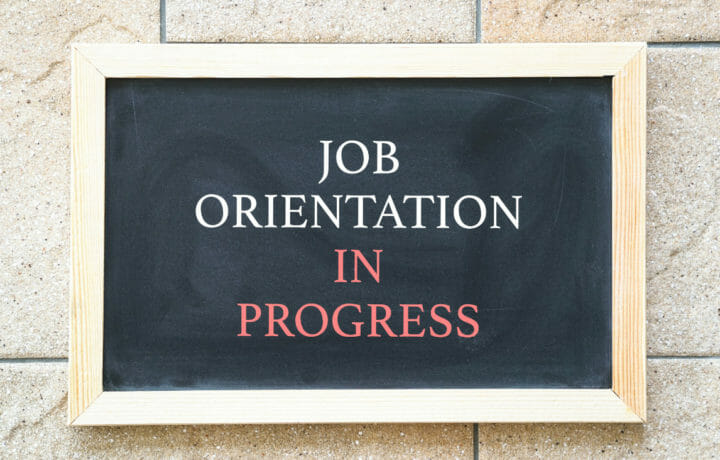Recruiting gets the limelight under the umbrella of defense HR strategy because bringing in new cleared candidates can make or break a business within this industry. With a smaller number of cleared workers available to source, businesses are looking to improve their retention strategies to convince their current top talent to stay with them.
But strengthening retention starts before the new employee even does: auditing your process for onboarding employees. Structured onboarding impacts a cleared candidate’s first impression of the company, continued motivation to support the mission, and engagement as they move from the one-month mark to the one year.
Essentially, onboarding is a continuation of good, cleared recruitment tactics. You need good communication, the right channels, effective touch points that are specific to the candidate and their needs, and so much more.
Structured Onboarding Plan
Especially for virtual onboarding during a pandemic, zoom fatigue is real and diversifying the communication venues when everyone’s remote is critical (like with recruiting candidates, using phone calls, texting, email, video chats, and more). Also, equally important, are tools that allow you to interact without joining a video call (Trello, Kanban, other project management tools, etc.).
Here is a rough timeline for more of a culture building onboarding process that will help you to retain the fine folks you just recruited:
Month 1
- 15-minute teammate virtual coffee chat with all team members
- Sending welcome team video / welcome snack or swag box
- Other formal trainings (HR systems, payroll, etc.)
- Add employee to MS teams or slack channel specific to that team
- 30-day formal check in with manager
Month 2
- 15-minute coffee chat with managers of other teams
- Meet with one member of executive team
- New employee contest – how many questions could you get correct about the company?
Month 3
- Meet with one member of executive team
- Formal 3-month check in – send an employee testimonial of where people that used to be in their position are now at the company
- Coworker scavenger hunt (over email) – recognition them to make them feel seen and a part of the team!
Month 4
- Meet with one member of executive team
- Randomly pair the new employee with coworkers across the company for virtual (or in person) coffees / happy hour
Month 5
- Meet with one member of executive team
- Virtual team building event – escape rooms are highly recommended
Month 6
- Meet with one member of executive team
- How are we doing company survey?
- Lunch on the company
Month 7
- Reflecting on your first 6 months survey – what have you liked? What would you change?
- Meeting with manager to make crazy stretch / dream big goals for next 6 months (to instill a sense of growth and inspiration)
Month 8
- Virtual team building event
- Now this new employee will serve as a buddy to newer employees
Month 9, 10, 11
- Monthly check in with manager and HR re-hash benefits if needed (depending on when open enrollment is)
Month 12
- How was our onboarding survey?
- Happy 1-year happy hour with team
Just like recruiters touching base with their candidate pipelines, employee onboarding should follow the same model. Cramming it into one day is annoying…and unrealistic. Onboarding doesn’t stop after an employee’s first month on the job.
THE CLEARED RECRUITING CHRONICLES: YOUR WEEKLY DoD RECRUITING TIPS TO OUT COMPETE THE NEXT NATIONAL SECURITY STAFFER.




